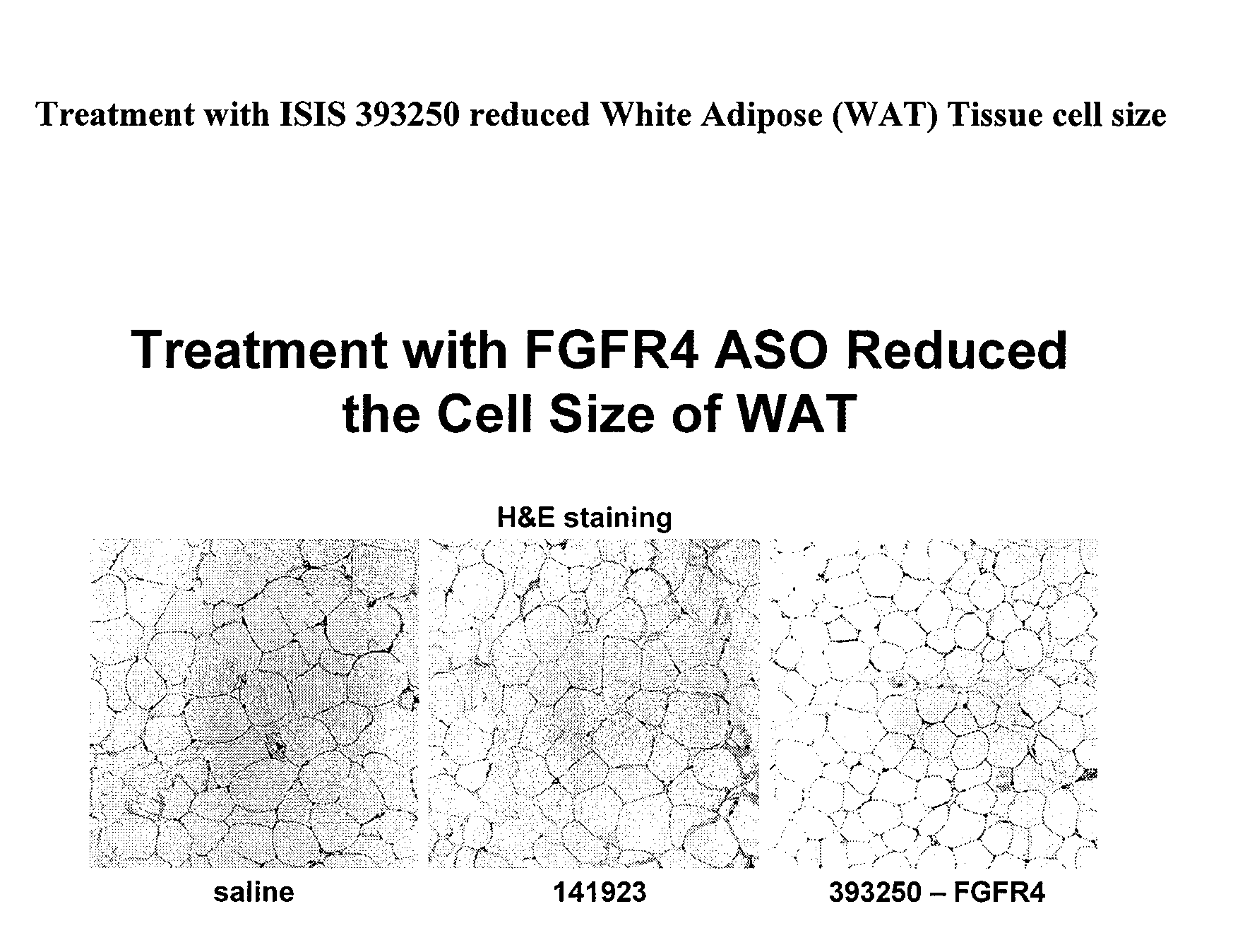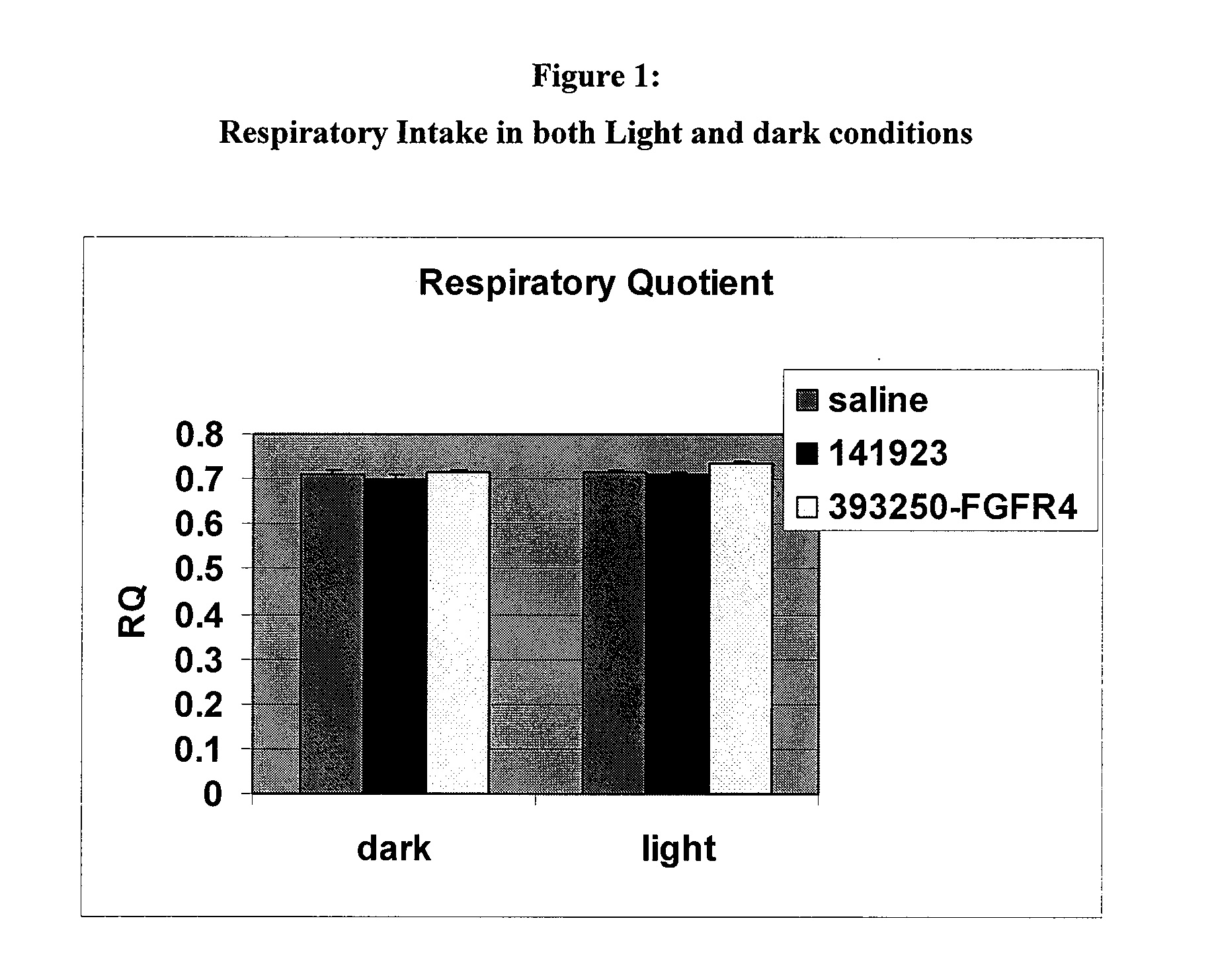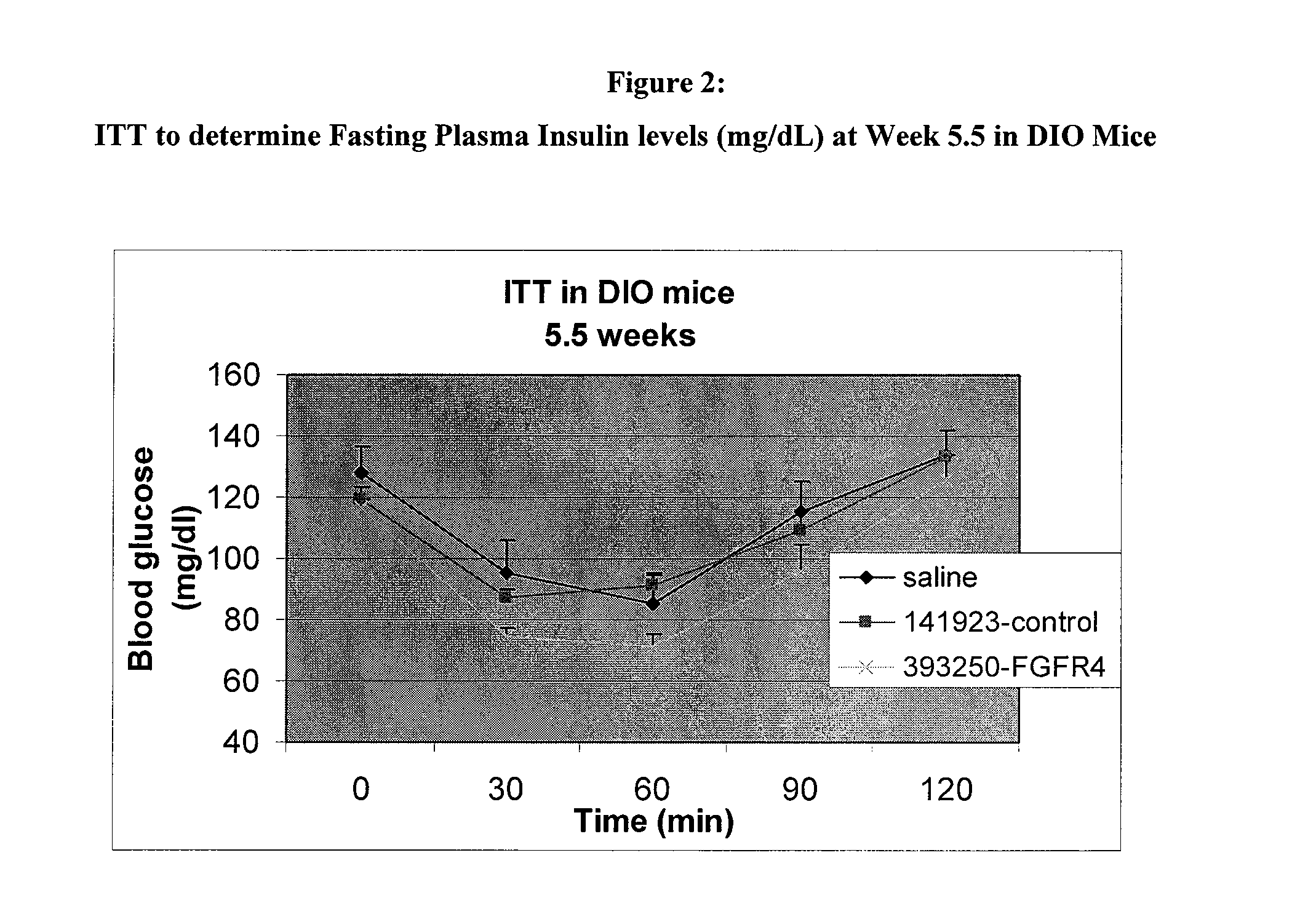Antisense modulation of fibroblast growth factor receptor 4 expression
- Summary
- Abstract
- Description
- Claims
- Application Information
AI Technical Summary
Benefits of technology
Problems solved by technology
Method used
Image
Examples
example 1
Antisense Inhibition of Mus musculus FGFR4: Primary Hepatocytes
[0473]Antisense oligonucleotides targeted to a FGFR4 nucleic acid were tested for their effects on) FGFR4 mRNA expression in vitro. Cultured primary hepatocytes plated in a 96-well plate were treated with 60 nM of antisense oligonucleotide. Transfection was carried out using Cytofectin™ (Genlantis, San Diego, Calif.). After a treatment period of approximately 24 hours, RNA was isolated from the cells and FGFR4 mRNA levels were measured by quantitative real-time PCR, as described herein using the primer / probe set shown in Table 4. Probes and primers to mouse FGFR4 were designed to hybridize to a mouse FGFR4 sequence, using published sequence information (GenBank® accession number BC033313.1 incorporated herein as SEQ ID NO: 10).
TABLE 4Gene Target-specific mouse Primers and Probes for Use in Real-Time PCRTargetSEQTargetSeq IDSequenceIDNameSpeciesNoDescriptionSequence (5′ to 3′)LengthNOmFGFR4Mouse10ForwardCCTTATGCCCCCATCTCA...
example 2
Antisense Inhibition of Human FGFR4: A459 Cells
[0482]Antisense oligonucleotides targeted to a FGFR4 nucleic acid were tested for their effects on FGFR4 mRNA expression in vitro. Cultured A459 Cells in a 96-well plate were treated with 160 nM of antisense oligonucleotide. Transfection was carried out using Cytofectin™ (Genlantis, San Diego, Calif.). After a treatment period of approximately 24 hours, RNA was isolated from the cells and FGFR4 mRNA levels were measured by quantitative real-time PCR, as described herein using the primer / probe set shown in Table 6. Probes and primers to human FGFR4 were designed to hybridize to a human FGFR4 sequence, using published sequence information (GenBank® accession number NM—002011.3, incorporated herein as SEQ ID NO: 5).
TABLE 6Gene Target-specific human Primers and Probes for Use in Real-Time PCRTargetSEQTargetSEQ IDSequenceIDNameSpecies NODescriptionSequence (5′ to 3′)LengthNOFGFR4Human5ForwardGTTCTGCTCGGCTTCTTGG19170PrimerFGFR4Human5ReverseAG...
example 3
Mus Musculus FGFR4Cross-Species Reactivity
[0489]The antisense compounds in Table 5 were designed to target different regions of the mouse FGFR4 RNA but have complementarity across species. Specifically, certain of the antisense compounds in table 5 are cross-reactive with rat mRNA. These include ISIS No's 299052, 322160, 393247, 393248, 393249, 393250, 393253, 393254, 393255, 393256, 393257, 393266, 393268, 393269, 393273, 393274, 393275, 393276, 393277, 393278, 393279, 393281, 393282, 393283, 393285, 393286, 393287, 393288, 393289, 393290, 393291, 393292, 393293, 393294, 393298, 393299, 393300, 393303, and 393307. Certain of the antisense compounds in Table 5 are cross-reactive with human FGFR4 sequences. Mouse FGFR4 antisense compounds that are cross reactive with human FGFR4 sequences are listed in Table 8.
TABLE 8Mus Musculus Cross- species reactivityTarget5′SEQ IDTargetSEQ IDIsis #NOSiteMismatchesSequence (5′ to 3′) NO3932535 2291TTCCTCAGAGGCCTCAAGGG213932545 4272AGGAAGGAAGCTG...
PUM
| Property | Measurement | Unit |
|---|---|---|
| Fraction | aaaaa | aaaaa |
| Fraction | aaaaa | aaaaa |
| Fraction | aaaaa | aaaaa |
Abstract
Description
Claims
Application Information
 Login to View More
Login to View More - R&D
- Intellectual Property
- Life Sciences
- Materials
- Tech Scout
- Unparalleled Data Quality
- Higher Quality Content
- 60% Fewer Hallucinations
Browse by: Latest US Patents, China's latest patents, Technical Efficacy Thesaurus, Application Domain, Technology Topic, Popular Technical Reports.
© 2025 PatSnap. All rights reserved.Legal|Privacy policy|Modern Slavery Act Transparency Statement|Sitemap|About US| Contact US: help@patsnap.com



